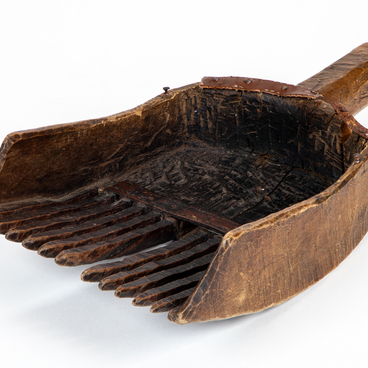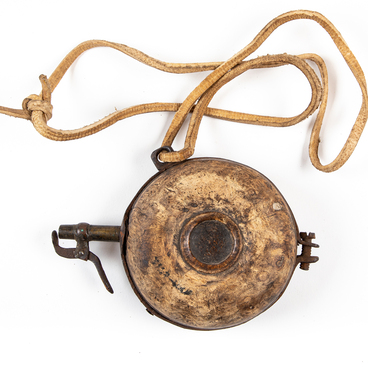The collection of the Sheltozero Veps Ethnographic Museum named after Rurik Petrovich Lonin features a rare exhibit — a sugar bowl woven from pine roots. Pine forests are very common in Karelia. Karelian pine is believed to have a special energy, and therefore it is very valued by the locals.
The object was donated to the museum in 1973 by Nadezhda Ivanovna Potapova, a native of the village of Sheltozero. The Potapov family kept many traditional household items.
The artifact on display is a round sugar bowl on an elegant wicker foot. It is difficult to guess what this object is made of, if one does not know for sure: the weave is so dense that it looks more like rope. The fact is that young pine roots grow right on the ground, which is why it is quite easy to collect them. Veps craftsmen knew this material well and used it for a wide variety of products. Unfortunately, the name of this sugar bowl’s maker is unknown.
In the sugar bowl, lump sugar was stored, which was sold in big sugar loaves and was quite expensive. Sugar was served on the table in a beautiful container with small tweezers; in peasant families it was more often used on holidays and Sundays.
Various localities had their own technical and
artistic methods of wood processing: chiseling, carving, turning, weaving,
embossing, painting. The simplest tools were used to create a pattern: an ax,
various chisels, scrapers, knives, etc. Until the 20th century, kitchen
utensils in the Veps peasant house were a kind of sculpture. When making
household items, Veps craftsmen paid more attention to form than decor. Ladles
of various sizes, pots, bowls, salt cellars, sugar bowls, spoons — all these
products reflect a desire of their creator to aptly choose harmonious
proportions and expressive plastic shapes. An aesthetic understanding of the
material, the presence of a lively figurative principle in every object, the
ability to show a pattern of wood fibers in the finished product — this is what
the Veps masters aspired to.


